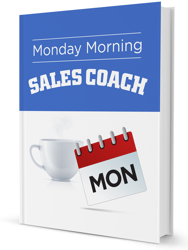Features & Benefits
“Features & benefits” have been a selling “staple” for many years. Salespeople have been trained on product knowledge and told to educate their customers about their “features and benefits.” This is a strategy that has seen its better days. F&B was the right strategy when the salesperson’s job was to educate the prospect about the various components of a product (the features) and how those components would be useful (the benefits) to the customer.
Today, in the “information age,” customers have ready access to much of this information via the internet and other sources, and the salesperson’s role has changed. The salesperson is expected to add value by being a problem solver, not a product pusher spouting features & benefits and wasting the customer’s time. As selling changes from the simple, transactional sale to the more complex, relationship sale, selling F&B becomes less and less effective. Yet companies and their sellers continue to focus on F&B, with increasingly unsatisfactory results. Here are some of the problems you’ll encounter selling F&B if you’re in a complex sale where relationship and trust are paramount.
Becoming a commodity. Compare your features to those of your competitors. How similar are they? Chances are good that you’re telling pretty much the same story. When companies look alike, you appear as a commodity in the eyes of your customer. Then you’re selling on price.
Lack of retention. When you pitch features and benefits, your prospect will not recall much about the details, and half of what he might remember will be wrong. People forget quickly, so what’s the point?
Loss of enthusiasm. If the prospect was enthusiastic about your presentation, but was unable to make a decision when you made the presentation, what happened to the enthusiasm after one week? If you said it diminished, you’re correct.
You’ll get “trapped.” After you have presented your F&B there is only one thing left to do – you’re trapped into asking for the business. From this point on every time you contact with the prospect it is associated with bringing the sale to a close, and the pressure associated with closing.
If you’re in a complex sale, learn how to uncover the prospect’s pain. If you’re in a transactional, low value sale and have but one chance to close your prospect, keep selling features & benefits.
The real value of features and benefits is when you are able to diagnose the prospect’s business challenges (pains) and then discuss how the appropriate features of a product or service will eliminate the prospect’s pains (the benefit).
Self-Study Assignment: Each of your product’s features was developed to address a pain that your typical customer has. Select several features and try to determine what problem this particular feature addresses. For example, a 24-hour customer service hot line (feature) might have been installed because clients were frustrated that they couldn’t get answers to problems 24/7 (pain).


